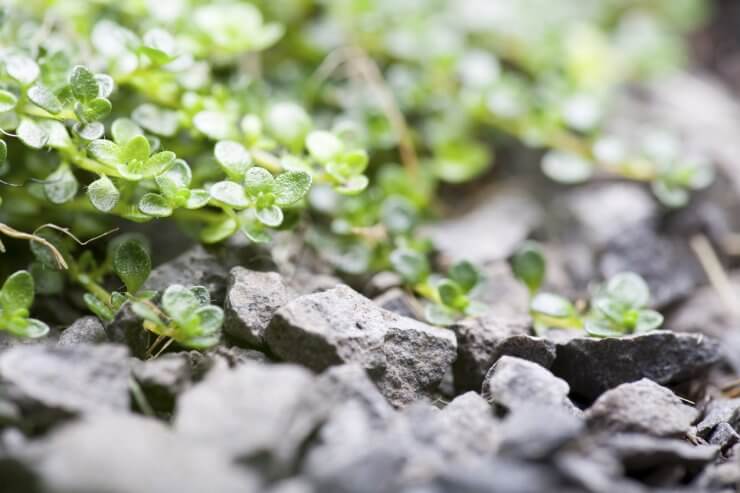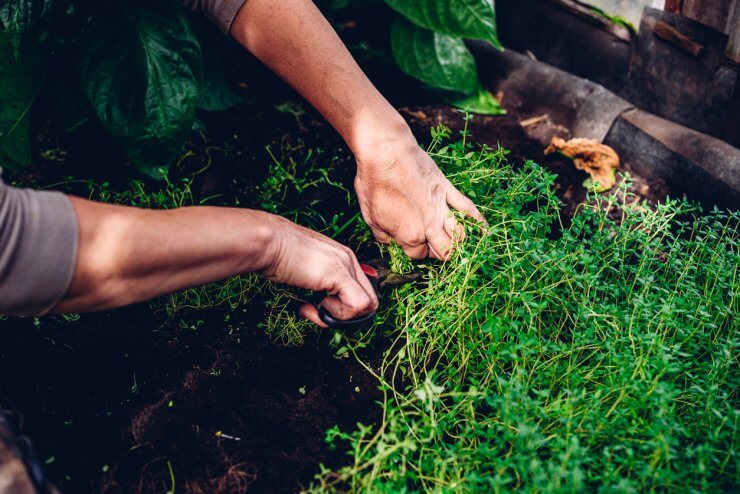
Young thyme with an attractive rock border
Planting Your Thyme
Once you have your planting location, your tools and supplies, and your plants, it’s time to start your thyme garden. If you’re starting your plants indoors from seeds, begin in late February to early April. Thyme seeds take a long time to germinate and take root. Sow the dust-like seeds on the surface of dampened, sterilized seed-starting mix under bright light with bottom heat. Keep watering to a minimum, as thyme seedlings are prone to damping off. Once they’ve sprouted, transfer the strongest seedlings to peat pots to make planting easier.
When seedlings are large enough, harden them off—that is, the process of slowly acclimating indoor-grown plants to outdoor elements by taking a week or so to introduce them to the eventual outdoor with increased shading and cooler temperatures, for example—then transplant them to the garden or to containers spacing them at 9 to 15 inches apart. Most thyme varieties are hardy to USDA Plant Hardiness Zone 4 (others to zones 5 or 6) and can be transplanted outdoors in late April or May, or when it is past the last frost date in your area and the ground temperature warms. You can direct sow in late May or when the ground is 60 to 70 degrees F.
Pruning Your Thyme

Pruning thyme in a garden bed
Prune your thyme plants at different times in the growing season to maintain their vigor and leaf production.
To keep your plants from getting too woody in the future, give your thyme a light pruning in late summer, after blooming. Using sharp shears or snips, select the woodiest stems of the plant and cut them back by about two-thirds.
If your thyme plants are already well into the woody stage, they may need a hard rejuvenation. In late fall, after the first frost, select a third of the most woody stems and cut them back by half.
Thyme—especially creeping thyme—can get a little wild. In the spring, you can give the plants shape, or cut the stems back from stepping stones, etc.—with a selective ‘haircut,’ again using sharp, clean shears.
Of course, if you’re using your thyme crop for culinary, medicinal, or craft purposes, you will be ‘pruning’ your thyme as you harvest. However, it’s a good idea to stop harvesting three to four weeks before the first frost, so the tender stems can harden off before winter.
Please tell us about your thyme planting and pruning techniques in the comment section below. Have you faced any challenges with planting or pruning your thyme? How have you handled it? Please share your experiences.


 Previous
Previous

